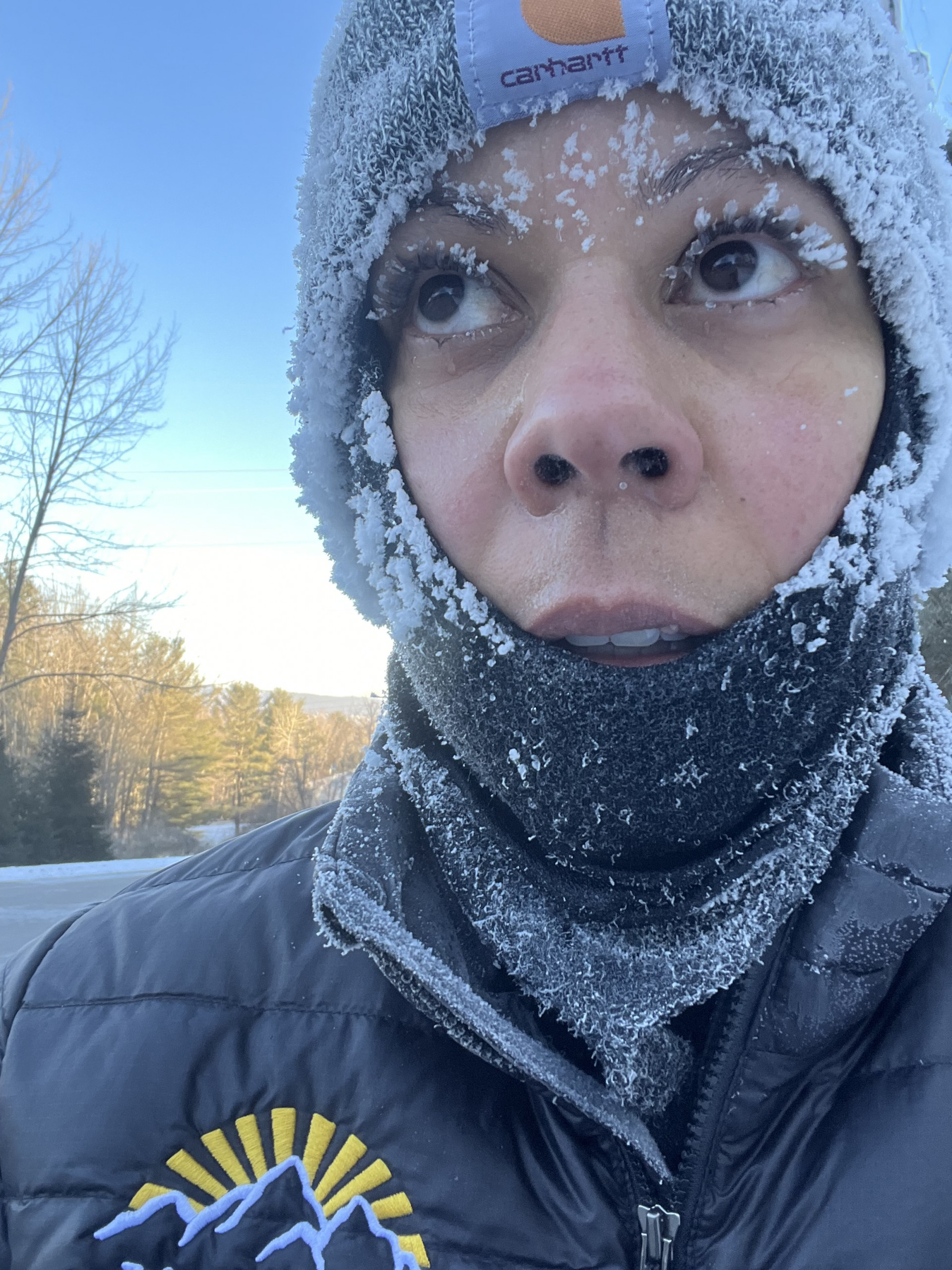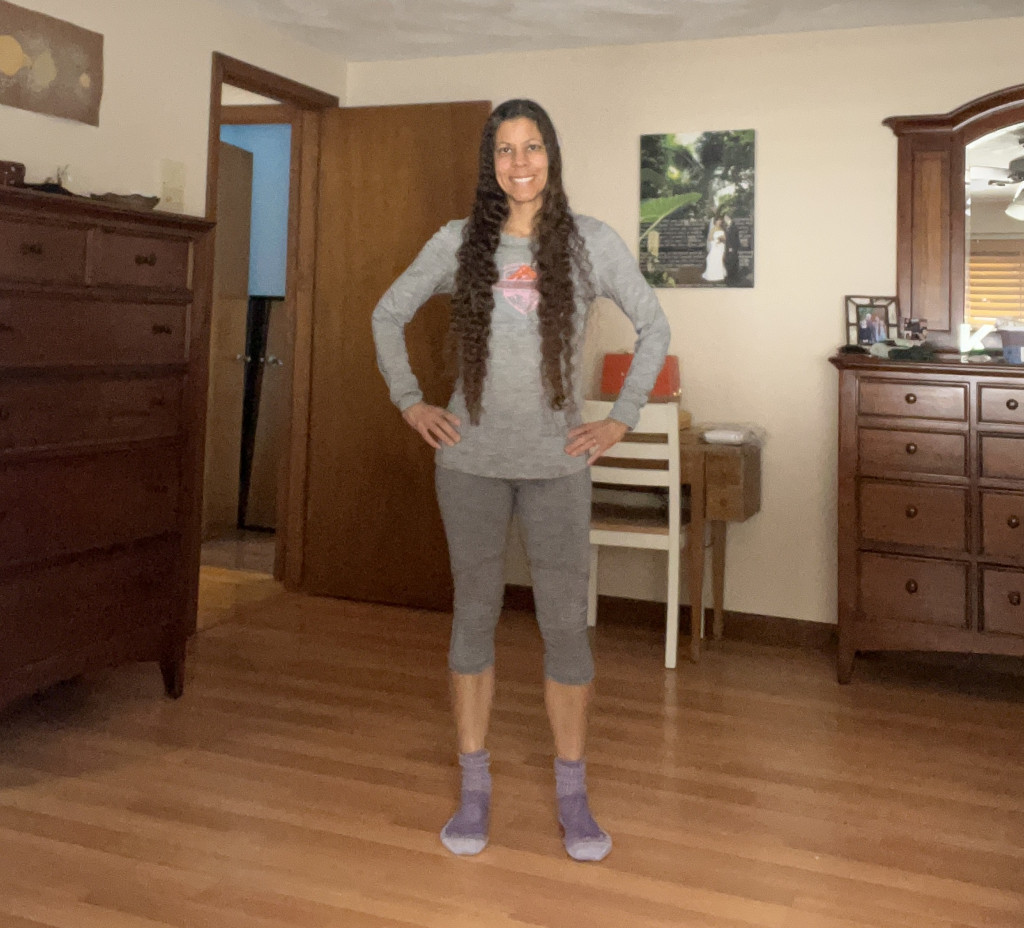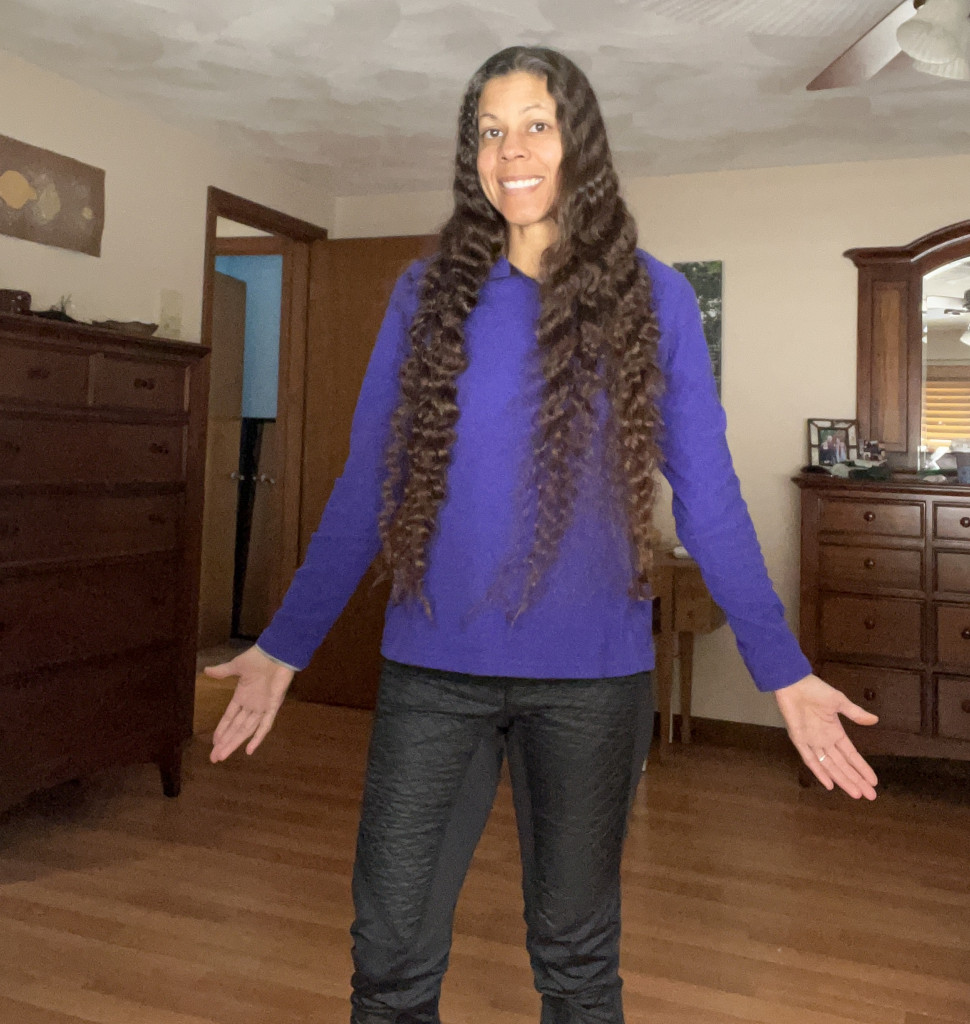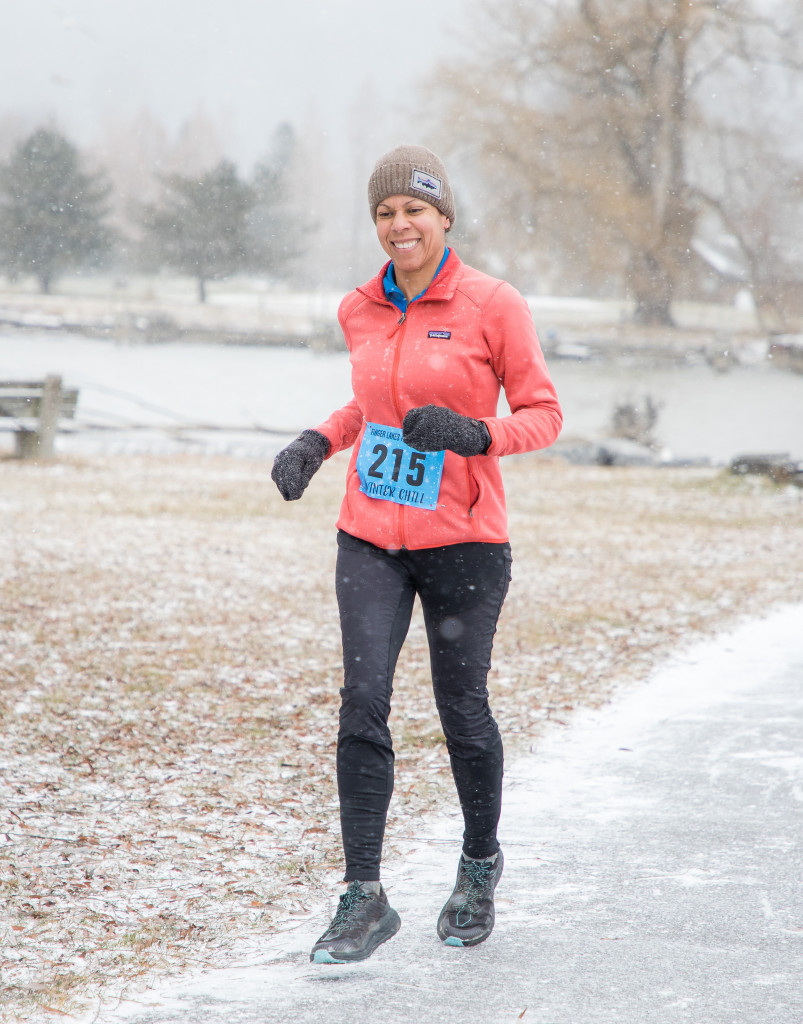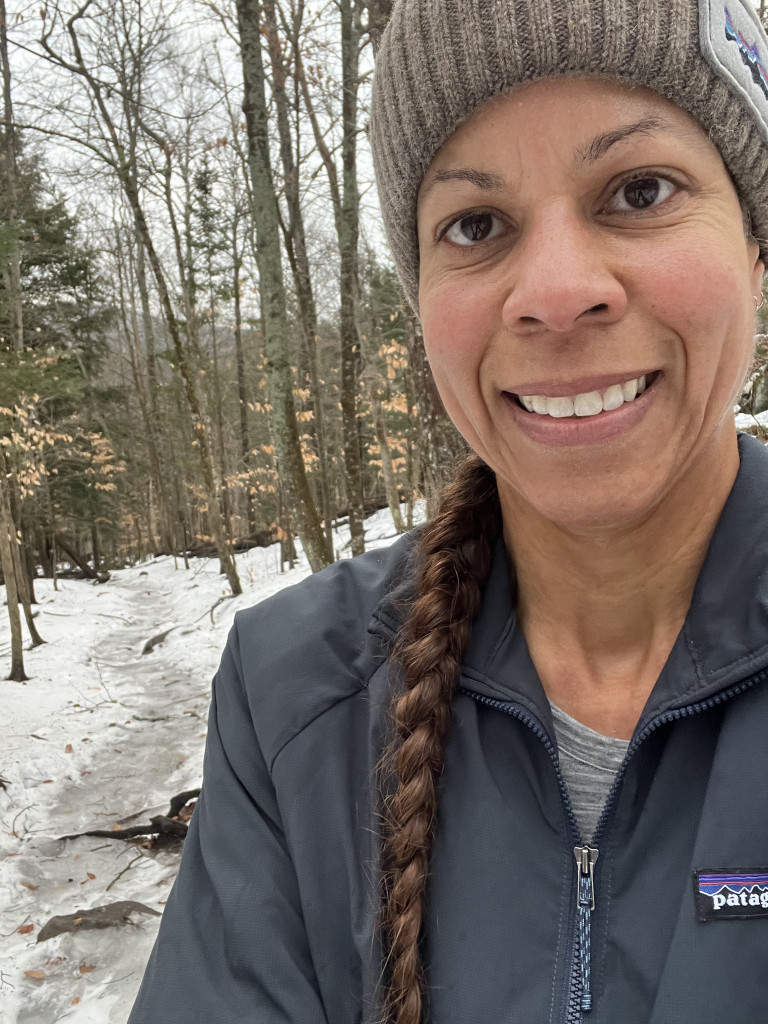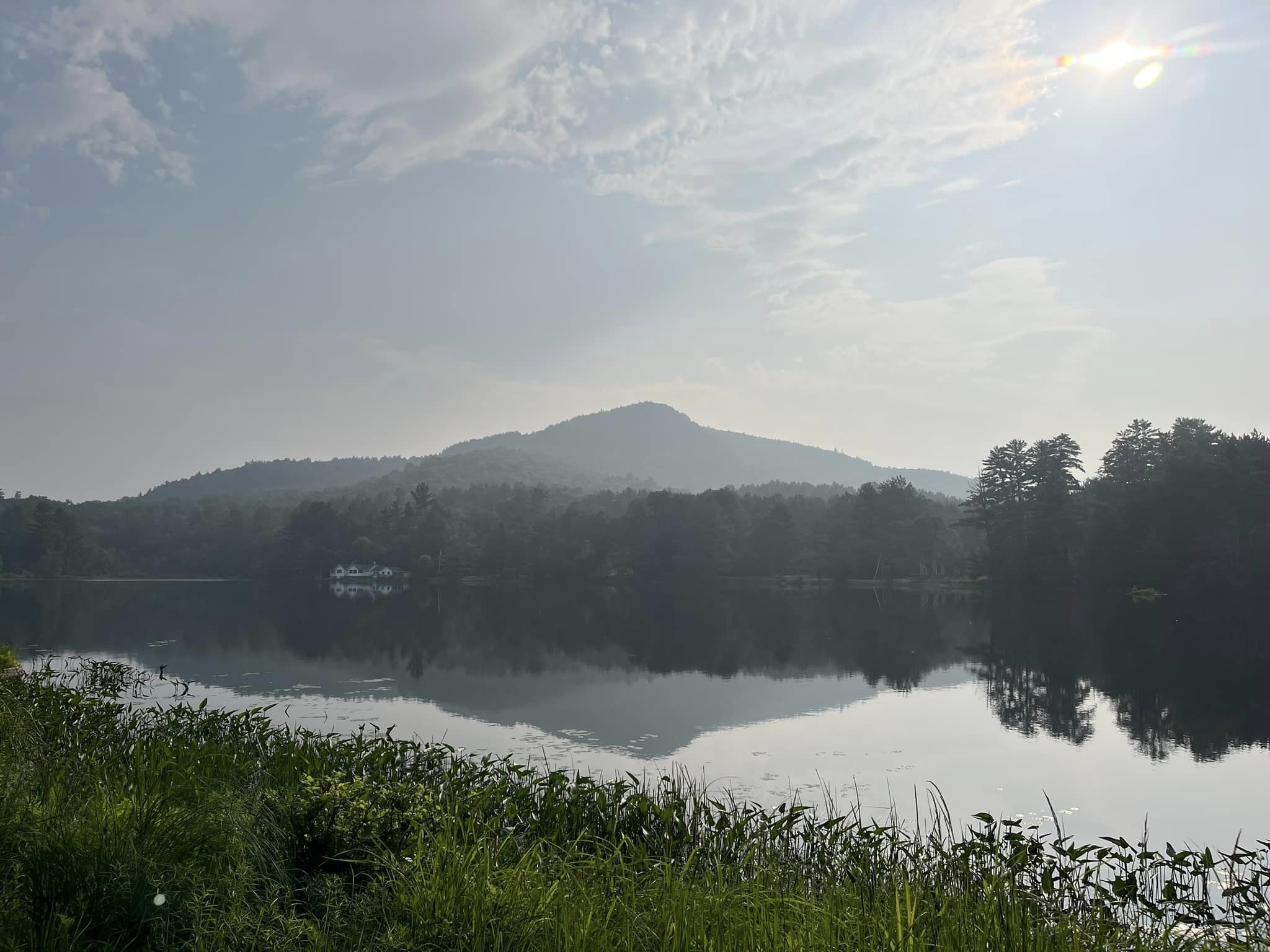Winterize Your Run!
It’s still dark and you hear the wind howling outside your window. As you crawl deeper under the covers, you suddenly regret not taking advantage of that Black Friday treadmill sale a few weeks ago. Or the Cyber Monday sale that followed. Even with your eyes closed, you know the snow is blowing sideways at that moment. The forecast for this morning calls for temperatures in the low teens. And you hesitate…the bed is just so warm and cozy right now. Maybe you could just do some yoga this morning.
Winter running is definitely its own adventure.
Here in the Northeast, conditions can change dramatically from one day to the next. Just last week, I ran on trails covered in snow, mud, and submerged under water. All in the same morning! That day offered me a forgiving 34°F, whereas as I’m typing this, it’s +3°F with a windchill of -9°F. One day I may need my spikes on the roads because the plows can’t keep up with the snow, and the very next day the roads are as ice-free as a morning in July. The sun may even make an appearance from time to time.
Though I grew up in Las Vegas and ran cross country in triple digit temperatures, I have always tried not to fight the cold weather. If it’s a day to run and rescheduling isn’t feasible, out I go, regardless of how cold it may be. To make matters even more interesting, I suffer from Raynaud’s disease. So I have to pay particular attention to my hands to make sure they don’t get cold. Once they do, they quickly become painful and distracting for me.
I believe that a key factor in staying consistent in your outdoor winter running is to be comfortable and warm when you head out. There’s simply no joy in feeling cold, just counting the miles and minutes (hours?) until you can be done.
After several seasons of experimenting and learning what works best for me, even on the coldest days, I am able to leave the house feeling wrapped in my own little cocoon. I make sure to start moving as soon as I step outside, and get inside as soon as my run is complete. On really cold days, there are no pictures because all four pairs of gloves must stay on (more on that later). Running generates the body heat to keep me warm and wearing the right layers (warm and breathable) keeps me insulated, without overheating. Not overheating is critical, as it increases sweat rate, which only leads to chilling shortly thereafter.
Each winter there are a handful of articles that appear from various sources, in which gear testers rate specific pieces of winter gear, or simply share their favorite go-to items. Here, I’d like to do something similar, but rather than recommend one specific brand or item, I also want to emphasize the type (i.e. “soft shell” or “fleece lined jacket” or “winter running tights”). Even if a particular item is out of your budget, you can find something similar from another brand that can also work well for you. Looking for a TNF quarter zip fleece and find a Columbia equivalent on sale? Buy that one instead. Are you after a pair of Oiselle leggings but rabbit is having a sale? Consider a pair of those instead. I’d like you to know that you can dress warm and continue to enjoy outdoor running in the winter, without spending hundreds of dollars, if you don’t necessarily want to invest in specific pieces. And as always, consider thrifting or even trading for gear, to help offset costs. Brick and mortar stores, such as Goodwill and Plato’s Closet, as well as online retailers such as eBay, ThredUp, Patagonia Worn Wear, and REI Used Gear offer a large selection of brand name cold weather and other season running gear, much of which is in excellent, like new condition, and even new condition, but at a fraction of the original cost. I have found the vast majority of my gear at Plato’s Closet and on eBay, and recently traded for a brand new pair of Craft running tights. Finally, also worth noting is Tek Gear, a generic brand sold at Kohl’s, one I’ve also had success with, and one I feel is pretty underrated. I once had a favorite pair of Tek Gear leggings and have found their clothing to be warm, comfortable, and to wear well. But wait for the sales and you’ll get some pretty stellar deals.
I will begin with the innermost layers and work my way outward.
1. Base layers:
On most winter days, wool base layers are a must for me. They are breathable and keep my core sufficiently warm, so there is a lesser tendency for my body to reroute blood flow away from my extremities to my core.
Upper body: Layers consist of a long sleeve crew neck shirt and on the coldest days, I will also wear a quarter zip wool long sleeve over top of that. Some brands I have include Ice Breaker, Smartwool, and Ibex. All but one of these were thrifted or traded for.
Lower body: I own two pairs of Ibex wool capris that I once wore in milder temperatures. They now serve as base layers, fitting well underneath most of my winter running tights.
And on a side note… Wool is amazing: I can wear these for several weeks before placing them into a cold water wash. Wool items become encrusted in salt from evaporated sweat, long before they begin to smell. I bet you wanted to know all that.
2. Mid-layers:
On most winter days, I’ll wear a basic quarter zip fleece over my wool crewneck long sleeve and under my jacket. The key, I’ve found, is to wear a fleece that is thin, or only moderate in thickness. A thick fleece won’t allow the sweat to wick away from your body as well, and you’ll start to get cold from all that trapped moisture next to your body. Brands I’ve used include Columbia, The North Face, and Patagonia, and all my quarter zip fleeces were thrifted.
3. Outer layers:
Upper body: I rotate a few jackets, depending on the weather conditions I can expect on a given day during the winter season. My go-tos include the Patagonia Womens Thermal Airshed Jacket, my paint-splattered-but-still-works-fine Patagonia Womens Tech Fleece Jacket, Columbia Titanium hooded softshell fleece jacket, and The North Face TKA Stretch softshell fleece jacket. For the absolute coldest days, the Thermal Airshed is pretty reliable, and should I ever need to, it packs down into its own pocket to a size that will fit in your hand. On days when it may only dip into the low 30s, the Columbia Titanium and The North Face jackets are great options. Zip pockets on all of these are awesome for keys and snacks. And all were purchased on eBay, other than the Airshed jacket, which was sent to me when I wrote for Patagonia.
Lower body: I typically wear Craft running tights in the winter, but in addition to these I also wear a pair of Reebok fleece-lined running tights. Wool knickers under my Craft winter running tights are great for the really cold days.
4. Accessories:
Gloves: Of all the gear I wear in the winter, gloves are probably the most critical item for me to get right. On most days I’ll wear three layers of gloves, adding the fourth once it gets down into the teens and single digits. From innermost to outermost, I wear the following:
- Patagonia Capilene Midweight Liner Gloves or Smartwool merino gloves
- thin knit gloves from Target or Old Navy (these cost me $4)
- Smartwool Cozy Grip Flip Mitt
- ski mittens (mine are from EMS)
The hybrid design of the Smartwool Flip Mitts allows me to flip the mitts off when my hands get a little too warm on milder days, and flip them back on when it’s colder. When I’m in the fourth pair (ski mitts), I feel a bit like a lobster with two claws. On those runs, I am diligent about not taking photos and keeping my hands covered. It’s critical that my hands stay warm but also incredibly cumbersome to wrestle off so many gloves and mittens, just to take a photo. Really, sometimes the photos can wait.
Socks: I live in wool socks from September to April, and regardless of temperature swings, I find wool socks paramount to keeping my feet warm. Depending on the temperature, I rotate thick wool socks, such as Smartwool hiking socks, thin wool socks, such as the crew variety offered by Patagonia, and fleece-lined wool socks (generic brands). I know many runners who swear by Darn Tough, which are made in Vermont and also of excellent quality. Though my feet are not wide, I find Darn Toughs to be too narrow for my feet, likely owing to the bunions I’ve been gifted by my late mother.
Beanies: Most beanies should work pretty well, such as the generic beanie I bought on clearance at Kohls several years ago. I also have a bright orange Carhartt beanie for hunting season and increased visibility on the roads. On really cold days, I wear a Patagonia Brodeo beanie, which is made from wool and recycled polyester. These are incredibly warm. Per wool, required washings are few, so maintenance is pretty low key. Because let’s be honest…hats get stinky after awhile too.
Balaclavas: When the temperatures dip into the teens and single digits, I wear these to protect my face. While the Raynaud’s typically affects just my hands and feet, my face has also been known to turn shades of red, white, and blue, especially when there’s a windchill.
5. Footwear:
I wear trail shoes year round and on all surfaces. While those with larger lugs (ex: Salomon Speedcross) may not work as well on asphalt, those with low to moderate lugs (ex: Salomon Ultraglide, Salomon Sense Ride, Hoka Speedgoat, Hoka Torrent) provide greater traction on wintery roads. I also find that trail shoe uppers keep my feet much warmer during the colder seasons. On snowy roads or once I’m on the trails, I’ll wear running spikes to increase traction. After years of wearing the Yaktrax, I recently upgraded to the Kahtoola Exospikes. I have found that the Exospikes handle incredibly well over icy sections and the plastic frame is very durable.
Additional learnings:
Ski goggles: In years past, when there were more subzero days, I’d wear ski goggles on some runs to protect my eyes. This idea was born one morning several years ago, when I was running in -10°F and my contact lenses actually began to freeze. Eventually, my right contact lens popped out of my eye. Ironically, I had been debating whether to turn left at the intersection for another loop or turn right to head for home. Let’s just say that freezing a contact lens and the resultant blurry vision in one eye sealed the deal (I headed for home).
Goose down: For other activities other than running, I appreciate the benefits of goose down. But I’ve learned that goose down quickly loses its insulation when it becomes wet (i.e. sweaty), which means I immediately start to get cold. So I no longer recommend it for running.
Hair: Long hair is always braided on runs, and on really cold days, the braid goes into the jacket. After a couple of years, the novelty of returning home with a frozen braid finally wore off. Furthermore, keeping the braid in my jacket and under all head coverings provides additional warmth. The key is to make sure your hair (and head) stay dry.
Tucking: Finally, tuck your layers into your pants, with your jacket going over everything. This helps keep the cold draft out! Brrrr!
Call for comments:
- Do you have any go-to layers or gear that help you stay warm during the winter months?
- Have you discovered tips that help you keep motivated and active during the winter months?
- Do you prefer indoor or outdoor running during the harshest months?
- Are you involved primarily in other winter sports, opting instead to hang up your running shoes until spring?
Add Comment
You must be logged in to post a comment.


